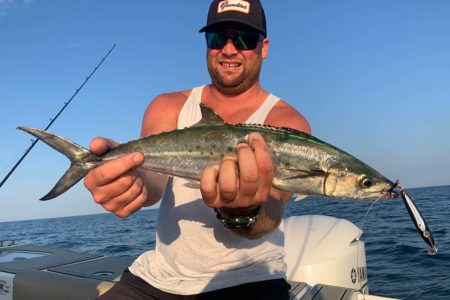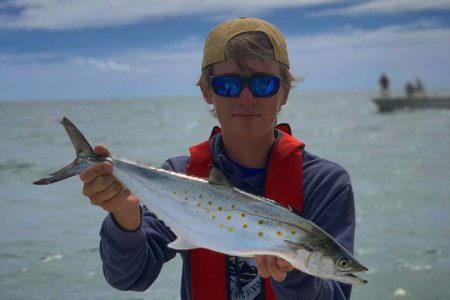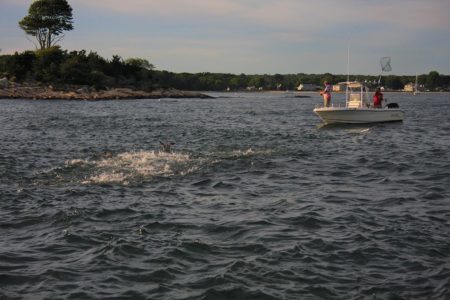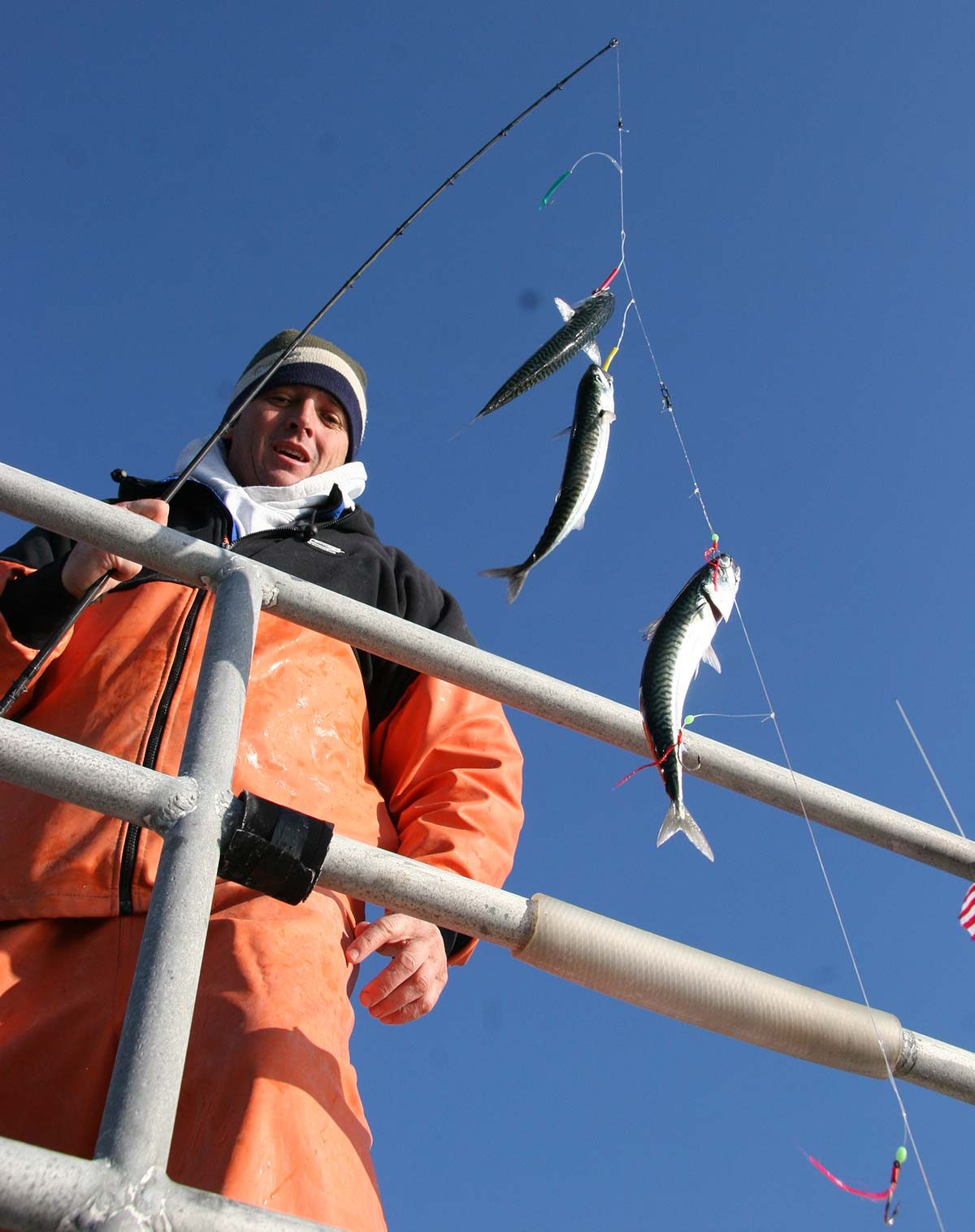
Occasionally head boats in the NY/NJ Bight will get a shot at winter mackerel fishery though short bursts of action are hard to predict.
It used to be sure thing that mackerel would flood north with a spawning run along the Atlantic coast in the spring – and after disappearing to the east with bluefish on their tails they would return again in late fall to early winter in NY/NJ Bight for another blast of solid ocean jigging.
Some years were better than others, but they were always there until the Soviet Union fleet and those of other Iron Curtain countries virtually wiped them out before our 200-mile fisheries limit was established.
In 1970, the Atlantic mackerel was the number two fish in poundage taken by anglers in the Mid-Atlantic region (behind only bluefish) and ranked third in the North Atlantic region behind bluefish and striped bass. Yet, by 1971, it was estimated that 99.38% of the Atlantic mackerel off our Atlantic coast were coming up in foreign nets.
American commercial fishermen had always brought in tons of mackerel, especially during the spring spawning run, but they were worth only pennies a pound in the domestic market as Americans preferred white-meat fish. Though the international market for mackerel was always strong, the infrastructure for taking advantage of such an inexpensive fish wasn’t in place at that time.
When the 200-mile limit went into effect, there was still a provision that surplus fish stocks not being fully utilized by American fishermen would be allocated to foreign fleets – though now they would have to pay a fee for what they were allowed to catch. NOAA Fisheries started subsidizing American commercial boat building, and developed joint ventures with some foreigners in which those fleets would buy mackerel at sea from the American boats in return for being able to fish within our limit.
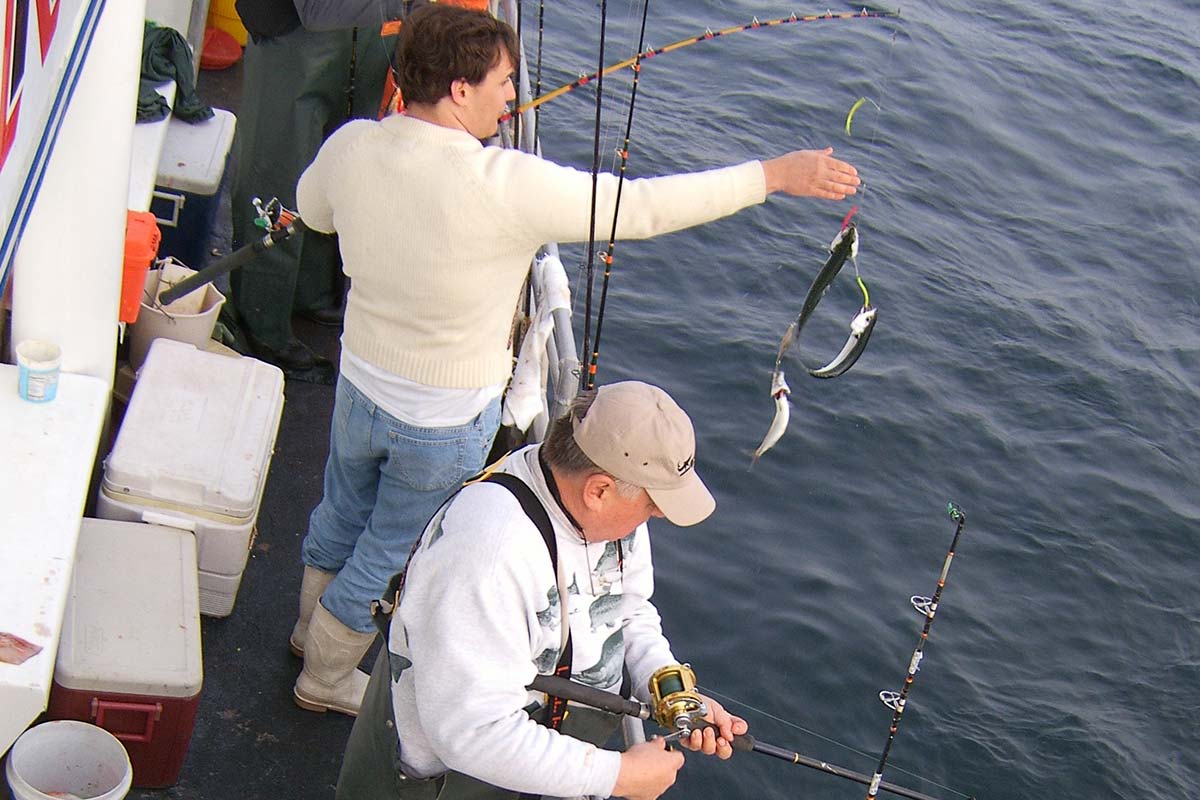
Mackerel fishing held up at first, but scientists soon determined that the stocks were being depleted. The Mid-Atlantic Fishery Management Council called for a much lower quota, but NOAA Fisheries insisted on allowing high exploitation despite the signs of collapse – and we’ve had to live with the results ever since.
Party Boat Bonanza
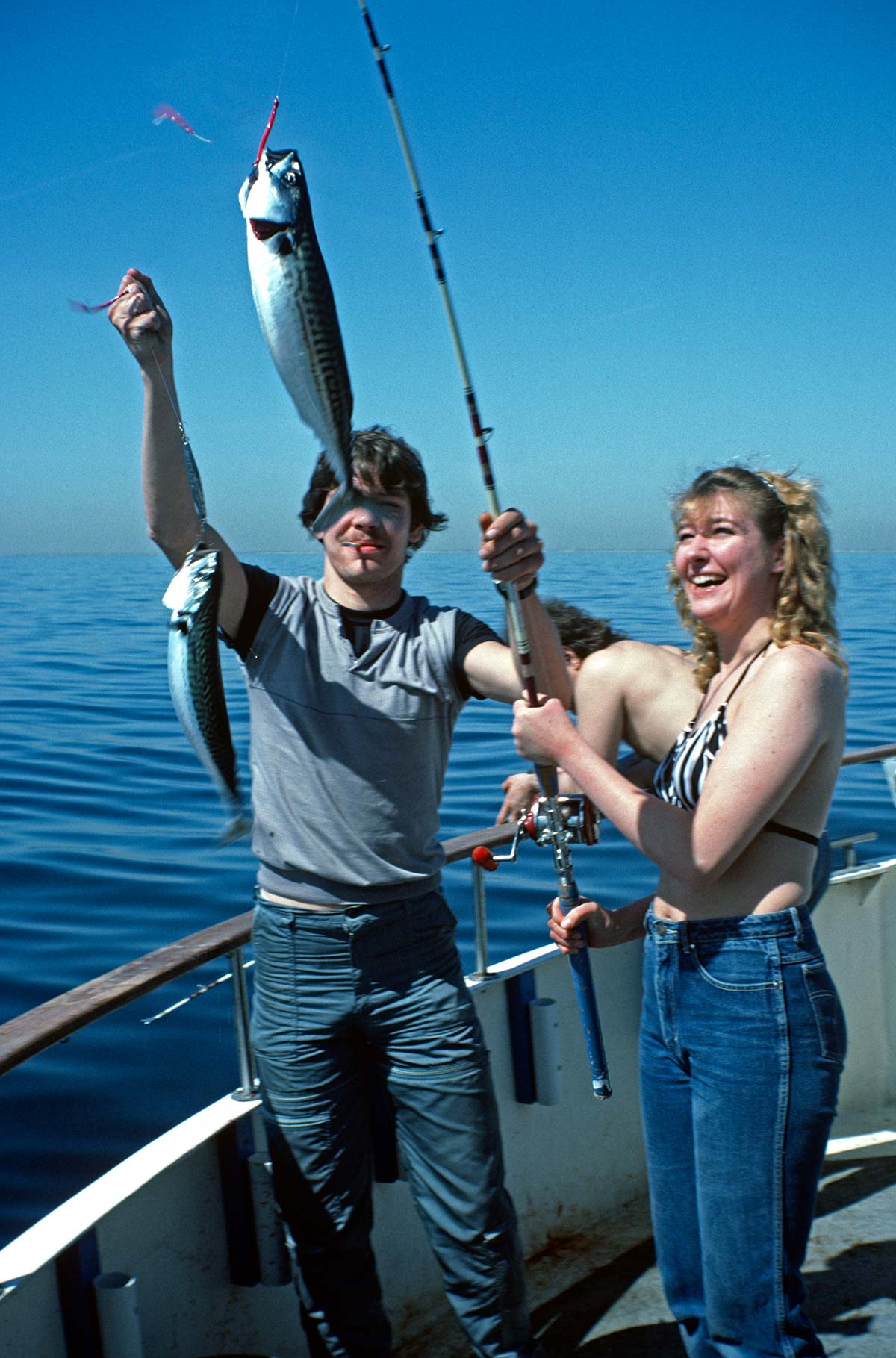
When I was the Saltwater Fishing Editor of the Newark Star-Ledger, I would start getting reports of mackerel coming up the coast in Virginia during April before party boats in Cape May would start running south to bring the first catches into a New Jersey port. Within a week or two those schools would be all along the coast and working east off Long Island to New England summering grounds. That was a bonanza for the party boat fleets as the migration was usually well within 20 miles of the coast where it was economical to fish for them – and catches were usually spectacular for two to three weeks.
It’s not easy to catch 100 fish of any species during a day trip, but in the case of mackerel that was often what was expected by a party boat angler seeking either food or stocking the bait freezer for the upcoming shark and tuna seasons – or with strip baits for fluke. Yet, there are now some of our younger readers who may not have ever seen an Atlantic mackerel.
Party boats do advertise mackerel in the summer, but those are another species, the chub mackerel. Chubs are smaller warm water fish easily identified by the spots or blotches on the sides below the midline. They also have a swim bladder, which the Atlantic lacks. Chubs are generally in the 8- to 14-inch range, while Atlantics more often weigh 1 to 2 pounds and have no spots below the midline. They have a velvety feel and appear to lack scales as the scales are minute and shed so easily that they will end up all over your tackle.
Jigging for mackerel is pretty basic. Start off by dropping the jigging rig to bottom and reeling up with a jigging motion at a moderate pace. Once located, only drop to those mid-depths and jig there. Being at the right depth is crucial. Keep an eye on successful anglers and duplicate what they are doing.
Larger Atlantics are more common to the Northeast. My largest of 3 pounds was caught on August 5, 1974 while casting an Abu Koster spoon to small patches of larger mackerel chasing bait at Shagwong Reef on the north side of Montauk.
Will They Or Won’t They?
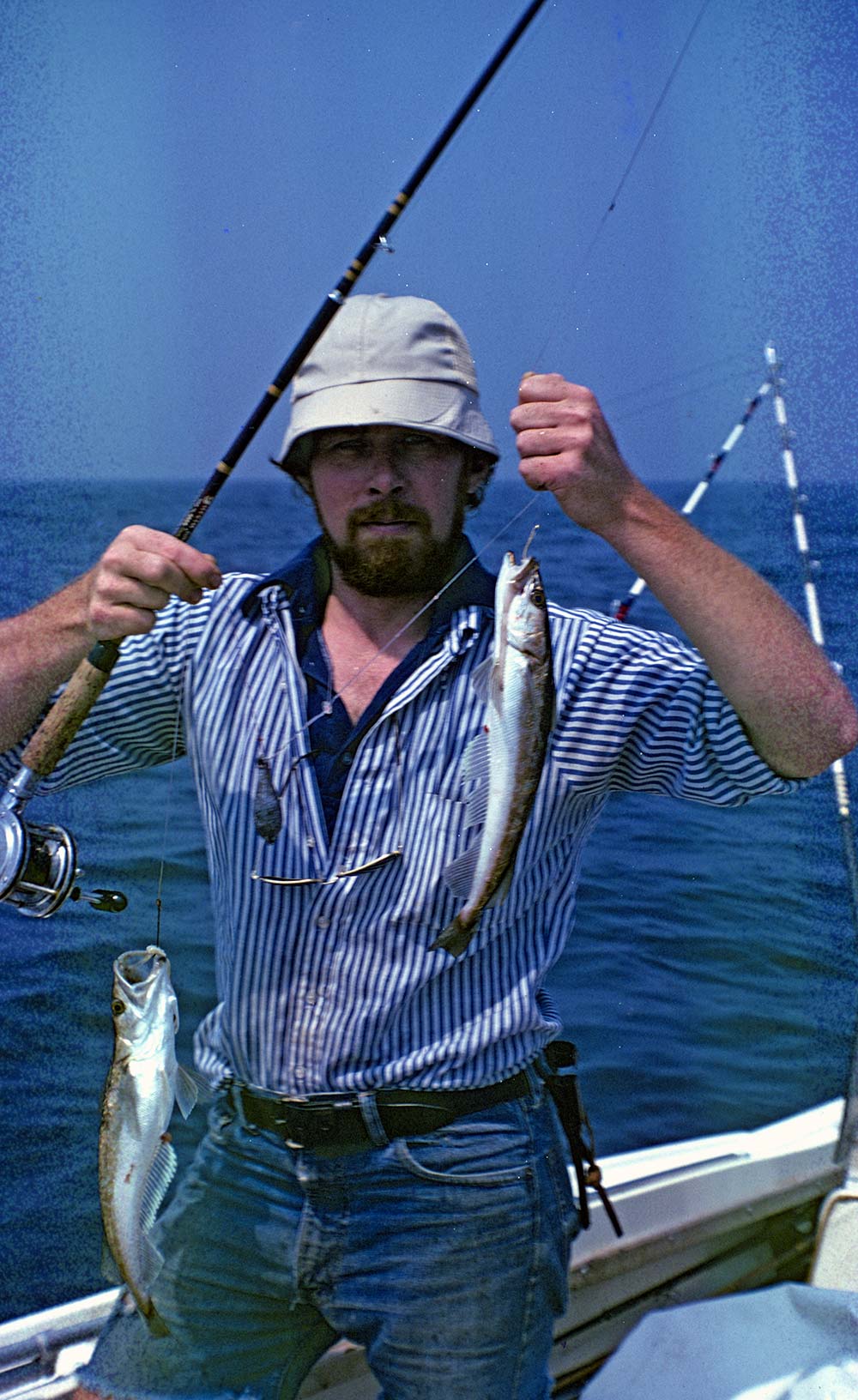
Atlantic mackerel are fine gamefish when hooked in that fashion by casting with light spinning tackle. However, most anglers have only caught them by jigging with tackle heavy enough to swing aboard tripleheaders on a standard triple tube jigging rig. Four at a time is no problem if the diamond jig providing weight is used. Some anglers substitute a sinker for the jig for safety sake as the jig hook flying around when a mackerel isn’t on it can be dangerous.
When abundant, there’s no problem in locating schools with modern electronics. In the old days, fishermen used to tie a balloon to a mackerel’s tail in order to track the school it was hooked from. Bait is not generally used for mackerel, but party boats used to carry a little bunker chum in case mackerel became fussy during the day. Light chumming and small baits occasionally saved the trip.
After the spring run failed to develop for a couple of years, I called NOAA Fisheries to find out what had happened to them as huge commercial quotas were still in place. I had assumed the big pair trawlers had been catching mackerel beyond range of the party boats. But it turned out that they also were unable to locate mackerel. The huge quotas were assigned year after year based on an old stock assessment from before the collapse.
It’s hard to believe such a thing could occur; but the “fishcrats” far away from the scene are often unaware of actual conditions unless someone complains.
Though much diminished, the winter mackerel fishery continues to provide a shot at those fish even though the quantity is much smaller and the short bursts of fast action harder to come by. A hot spot one day can be a desert the next. However, there are now anglers who are willing to spend a lot of money and drive hundreds of miles in order to catch mackerel. Northern New Jersey and western Long Island party boats will search them out and communicate that information to others as there’s usually enough for the small fleet once located.
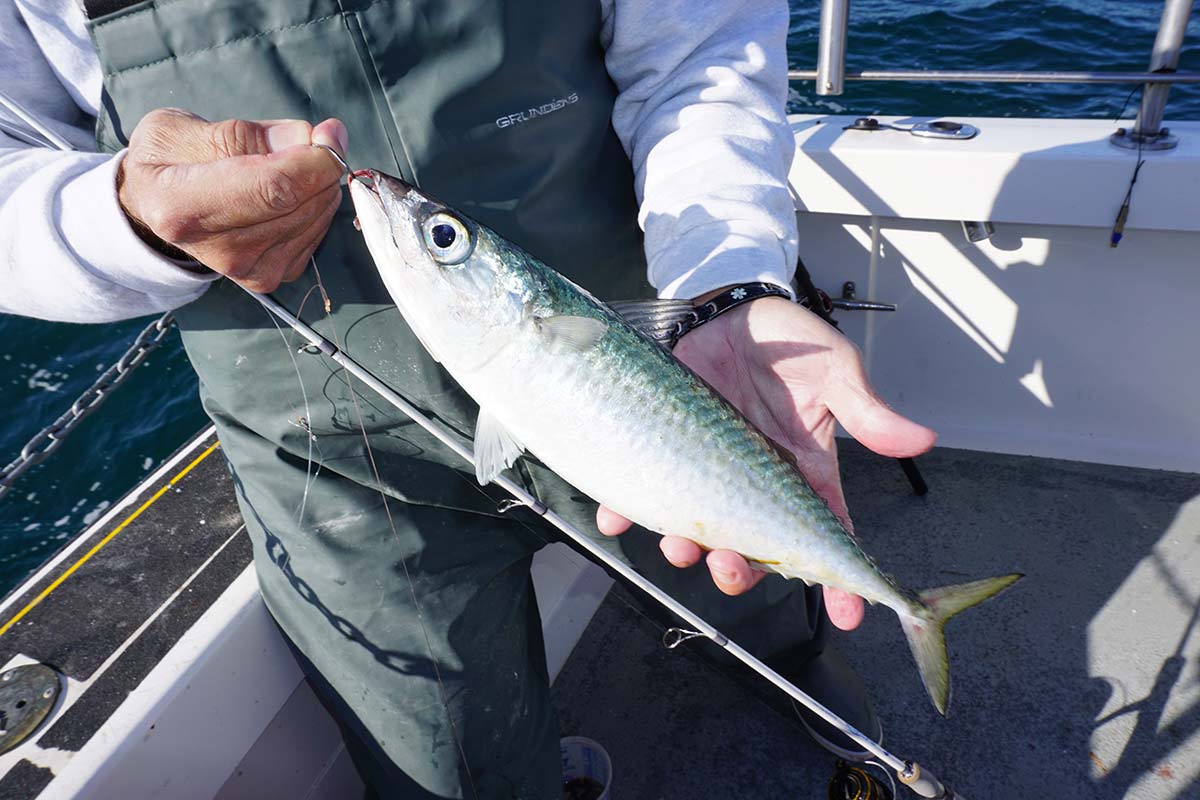
While Atlantic mackerel have never been as popular for eating in the U.S. as that are in Europe and over most of the world, the idea that they are strong-tasting is wrong. Though there are many ways to prepare them, I simply pan fry them in margarine with garlic chips after filleting and cutting out the dark midline.
Will we ever see mackerel fishing return to its historic abundance? Fortunately, mackerel are prolific fish. According to Al McClane’s Field Guide to Saltwater Fishes of North America “A moderately prolific medium-sized female produces 360,000 to 450,000 eggs.” When conditions are right, there could be a new spike that will make Atlantic mackerel once again the most abundant fish in our waters – if we manage them right!
